Zoom
Trash

Sans titre. Sans titre. From red seaweed to climate-smart cows: New Zealand leads the fight against methane. It is not exactly glamorous work.
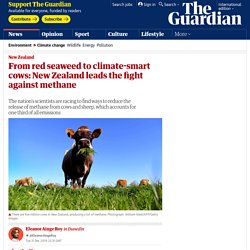
Measuring sheep farts is smelly, time consuming and expensive. But for Dr Suzanne Rowe, a scientist who is breeding strains of sheep that emit less methane than regular flocks, there is nothing more important she feels she could be doing. “New Zealand has really become a global leader in this space and there’s a lot of buzz around at the moment – it’s hugely exciting,” she says. The release of methane gas from New Zealand sheep and cattle accounts for one third of the country’s greenhouse gas emissions, the single largest contributor in the country. Since 1990, methane gas from stock has increased by 10%, according to the ministry of the environment, along with a 70% increase in dairy cattle and a 44% drop in sheep numbers. Accordingly, methane has found itself in the crosshairs of the government’s climate action policy, and scientists around the country are being given the green light to run free with their best and brightest ideas to lower emissions.
Sans titre. Sans titre. Sans titre. Start this new year (and decade) right.Watch these two little animated films for practical advice on how to prevent both animal suffering and the spread of drug-resistant germs infecting people and livestock.

First up, Animal Welfare, a 5-minute video short (in English, with Swahili captions) recommending highly practical ways for communities in low- and middle-income countries to treat their animal stock more humanely. The video does not shy from recommending humane ways to transport and handle animals being sent for slaughter, and the killing process itself. These are not easy subjects to talk about and not easy jobs to do. This film manages to address these issues sensitively, with compassion for both the animals and the humans responsible for slaughtering them for human consumption.
Sans titre. Sans titre. Sans titre. Transcript - Dominion Movement - Animal rights documentary DOMINION. Download as a PDF References are available on the Facts & References page.
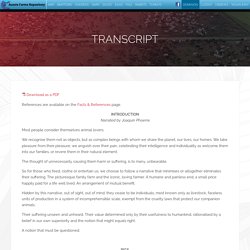
INTRODUCTIONNarrated by Joaquin Phoenix Most people consider themselves animal lovers. Calf Survival Factsheet 190121 WEB. Sans titre. Sans titre. Sans titre. Cattle Welfare Assessment Awareness, promotion and achieving high standards of animal welfare should always be a key priority within sustainable livestock practices.
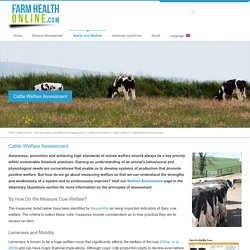
Gaining an understanding of an animal’s behavioural and physiological needs are cornerstones that enable us to develop systems of production that promote positive welfare. Sans titre. In this lesson I engage students by watching the National Geographic video Meet the Super Cow.

This video demonstrates the power humans can have in influencing the inheritance of desired traits in organisms, in this case the organism is Belgian Blue cows. (MS-LS4-5. Gather and synthesize information about the technologies that have changed the way humans influence the inheritance of desired traits in organisms.). These cows are bred for their extreme muscle mass. Sans titre. Sans titre. Sans titre. Sans titre. Becoming a great athlete is sort of like learning to speak a new language, but instead of studying vocabulary and drilling grammar, you’re working out and fine-tuning your game.
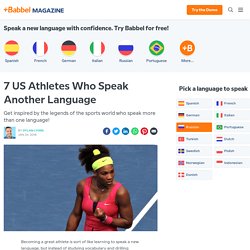
Sans titre. Look at these examples to see how the future continuous and future perfect are used.

In three years' time, I'll be studying medicine. In five years' time, I'll have finished studying medicine. Try this exercise to test your grammar. Read the explanation to learn more. Gene edited pigs are resistant to billion dollar virus - Media Hopper Create - The University of Edinburgh Media Platform. The difference between 'grass-fed' and 'grained' beef. Do you really know where your food comes from?
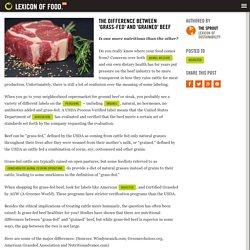
Concerns over both animal welfare and our own dietary health has for years put pressure on the beef industry to be more transparent in how they raise cattle for meat production. Unfortunately, there is still a lot of confusion over the meaning of some labeling. When you go to your neighborhood supermarket for ground beef or steak, you probably see a variety of different labels on the packaging – including organic, natural, no hormones, no antibiotics added and grass-fed.
A USDA Process Verified label means that the United States Department of Agriculture has evaluated and verified that the beef meets a certain set of standards set forth by the company requesting the evaluation. Grass-fed cattle are typically raised on open pastures, but some feedlots referred to as concentrated animal feeding operations do provide a diet of natural grasses instead of grains to their cattle, leading to some murkiness in the definition of “grass-fed. " Agri Beef Co. Ranch to Table. Bison - Farm To Fork Wyoming. Say cheese: The secrets of real French 'fromage' Travel - The end to a French cheese tradition? In the heart of Normandy’s Pays d’Auge region, about an hour’s drive inland from the D-Day beaches on France’s northern coast, lies the 200-person village of Camembert, surrounded by white-and-brown cows grazing in lush green pastures.

It is here that, according to legend, a woman named Marie Harel sheltered a priest who, like many following the French Revolution, was given a choice: swear allegiance to the new Republic or die at the guillotine. Camembert wars get dirty in fight for France's soul. In his tiny workshop with a view of his cows, Francois Durand stood lovingly ladling raw milk curd into cheese moulds.

After several weeks of salting, ripening and maturing, these would turn into the pungent, oozing Camembert that is France's favourite soft cheese - as much part of the national stereotype as the Basque beret, the baguette and a glass of red wine. "When you use raw, unpasteurised milk, the taste is nice and fruity," Durand mused as he inspected the smelly contents of his ripening rooms. "You can taste what the cows have been eating at different times of year. " Durand is the last dairy farmer in the tiny Normandy village of Camembert still making traditional, raw milk Camembert cheese. Camembert cheese is going extinct. Wikimedia/Dominik Hundhammer The INSIDER Summary: The much-beloved creamy French cheese is teetering on the edge of extinction.Authentic Camembert cheese can only be made the old-school way: with raw, unpasteurized milk.Only a few small producers use this process, and increasing crackdowns on raw milk products could make Camembert disappear altogether.
Fancy cheese boards face an unpopular downgrade. Camembert — the creamy French cheese that looks like brie but smells like ripe feet— is in danger of becoming extinct thanks to strict government regulations and a crackdown on raw milk products. To be labeled authentic Camembert cheese, cheesemakers must prove that their cheese was made with 38% milk fat from cows in the Normandy region using unpasteurized, raw milk. Raw milk cheeses may be popular with enthusiasts, but in the United States they're a big no-no. 21 native British sheep breeds and how to recognise them - Country Life. Britain’s extraordinarily diverse native sheep breeds lead the world. Illustrations by Fiona Osbaldstone. Counting sheep need not be as monotonous an activity as the old adage about it curing insomnia would suggest. There’s no shortage of sheep to count, either: 33 million or so across Britain, which is a quarter of the EU flock and 3% globally.
Native horse breeds of Britain - Country Life. Rare Breeds Survival Trust. Heritage Livestock Canada - GENESIS Magazine.